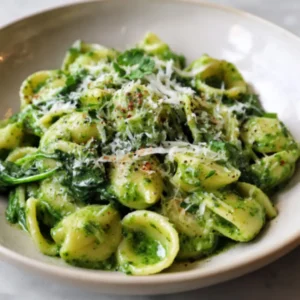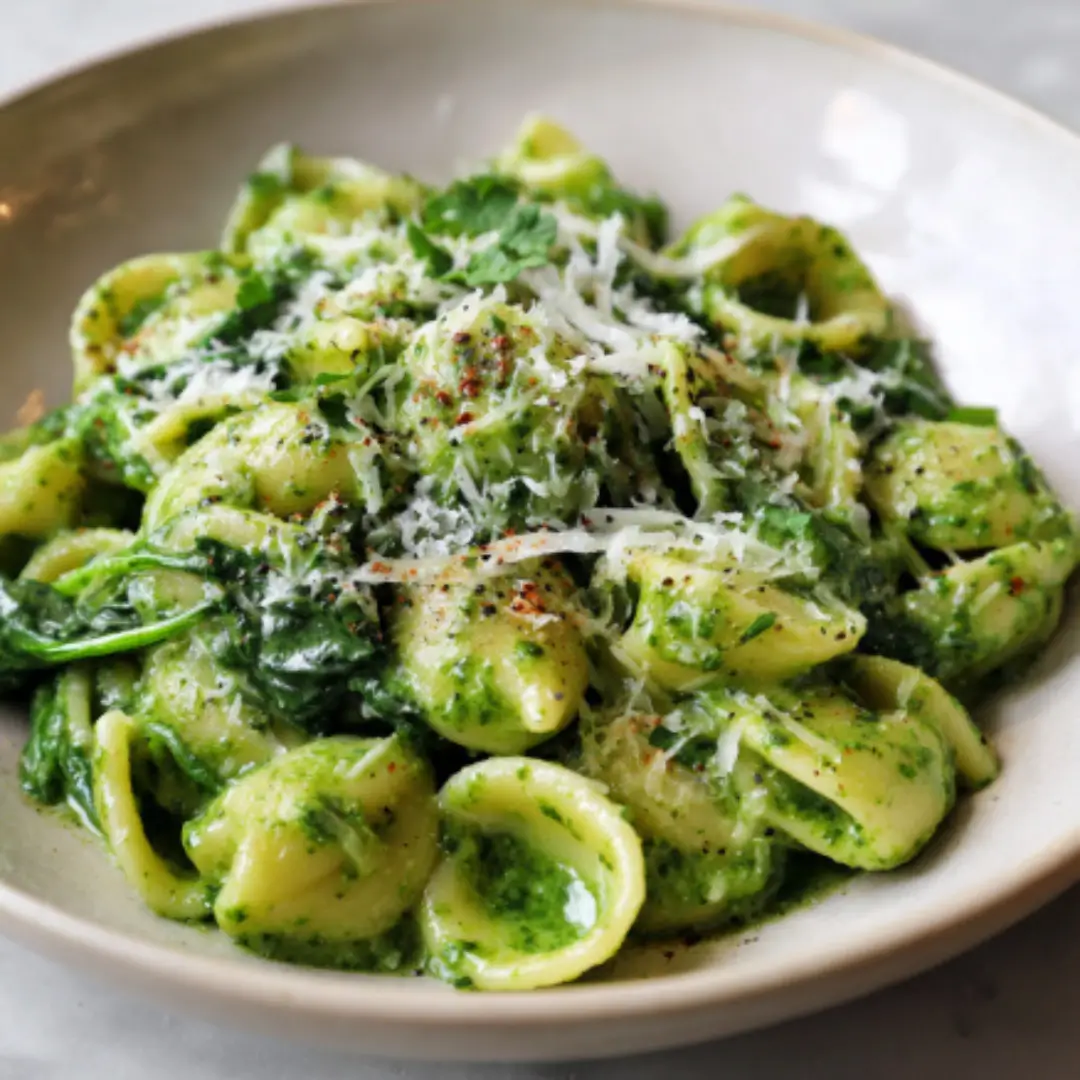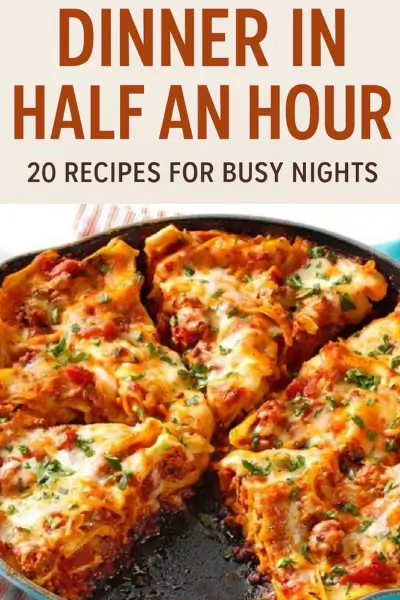Spinach Pasta Sauce is a vibrant, creamy green sauce that brings a fresh and nutritious twist to your favorite noodles. Its smooth texture and bright color make every bite inviting, while the blend of spinach and cheese creates a delightful balance of flavors. The sauce coats the pasta beautifully, turning a simple meal into something special with minimal effort.
Why We Love This Spinach Pasta Sauce Recipe
This spinach pasta sauce stands out for its simplicity and taste. It uses fresh spinach, which adds a burst of color and nutrients, combined with ricotta and Parmesan for creaminess and depth. You get the freshness of greens without the bitterness, thanks to the gentle cooking of garlic and onion that brings out the best in the spinach.
It’s versatile and forgiving, allowing you to swap ricotta for peas if you want a dairy-free option or to add herbs and lemon zest to personalize the flavor. You can enjoy this sauce with any pasta shape, from spaghetti to penne, and it’s just as delicious warm or at room temperature.
Another reason to love this recipe is how healthy it is. It’s packed with vitamins and minerals from the spinach, plus protein from the cheese. Despite being creamy, it’s light enough to feel good about and satisfies your comfort food cravings without heaviness.
Ingredients for Spinach Pasta Sauce
To prepare this delightful spinach pasta sauce, you’ll need a handful of simple ingredients that you likely already have at home.
- 2 tablespoons olive oil
- 1 teaspoon minced garlic (add more if you like a stronger flavor)
- ½ cup finely diced onion (optional but recommended for sweetness)
- 11 ounces fresh baby spinach
- 1 pound of your preferred pasta
- 1 cup ricotta cheese (or thawed frozen peas as a dairy-free alternative)
- ½ cup grated Parmesan cheese
- Salt and pepper to taste
- Optional toppings: lemon zest, cracked black pepper, fresh minced basil or parsley, additional Parmesan cheese
How to Make Spinach Pasta Sauce
Start by heating the olive oil in a medium skillet over medium-low heat. Once the oil is warm, add the minced garlic and diced onion if you are using it. Stir these together and cook for about two minutes until they become fragrant and the onion softens. This step helps mellow the sharpness of the garlic and onion and sets a flavorful foundation for the sauce.
Next, add the baby spinach to the skillet. Stir it gently until it wilts down completely. Once wilted, turn off the heat and cover the skillet. Let it sit for five minutes, allowing the residual heat to soften the spinach even more. If you decide to use frozen peas instead of ricotta, add them to the skillet before covering so they thaw in the warm pan.
While the spinach mixture is resting, bring a large pot of salted water to a boil and cook your pasta according to the package instructions. Reserve one cup of the pasta cooking water before draining the noodles. This starchy water will help you adjust the sauce consistency later.
Transfer the spinach mixture into a blender. Add the ricotta cheese, two tablespoons of the reserved pasta water, and the grated Parmesan cheese. Blend everything until the sauce is completely smooth. If it seems too thick, add more pasta water a little at a time until you get a creamy, pourable texture.
Finally, toss the cooked pasta with as much sauce as you like. Season with salt and pepper to taste. Depending on how saucy you prefer your pasta, you might have some extra sauce left, which can be refrigerated and enjoyed later. Serve with extra Parmesan and any optional toppings like lemon zest or fresh herbs for an added burst of flavor.
How to Serve Spinach Pasta Sauce
Serving your spinach pasta sauce is easy and flexible. You can plate it hot, making it a comforting meal perfect for lunch or dinner. Toss the pasta well so each noodle is coated evenly with the creamy spinach sauce.
For a simple meal, pair this pasta with a crisp green salad and some crusty bread. The salad adds a refreshing crunch, balancing the softness of the pasta, while the bread helps soak up any extra sauce.
If you want to elevate your dish, sprinkle fresh herbs like basil or parsley on top. Adding a bit of lemon zest can brighten the flavors and add a lovely citrus aroma. A final dusting of grated Parmesan cheese gives a salty finish that rounds out every bite.
This sauce also works well as a pasta salad dressing when cooled. Mix it with cold pasta, chopped veggies, and a handful of toasted nuts for a vibrant and healthy cold dish.
Expert Tips for Spinach Pasta Sauce
To get the best from this spinach pasta sauce, here are some tips that can improve your cooking experience.
First, don’t rush the garlic and onion step. Cooking them gently brings out sweetness and aroma that complement the spinach’s natural flavor. If you like a stronger garlic presence, feel free to double the amount.
Use fresh baby spinach for the best texture and taste. Full-size spinach leaves work too but might need more cooking time to soften. Avoid overcooking the spinach as it can turn bitter.
When blending, start with less pasta water and add gradually. This way, you can control the sauce thickness perfectly without it becoming too runny.
If you’re making a dairy-free version using peas, make sure they are fully thawed and warm before blending to get a creamy texture.
For added flavor, try topping your pasta with cracked black pepper, lemon zest, or fresh herbs. These little touches can take a simple dish to the next level.
How to Store Spinach Pasta Sauce
If you make extra sauce, storing it properly helps keep it fresh and tasty. Transfer leftover sauce to an airtight container and refrigerate it. It will last up to five days in the fridge, making it convenient for quick meals later in the week.
For longer storage, freeze the sauce in a freezer-safe container. It can keep well for up to six months. When ready to use, thaw it overnight in the fridge and stir well before reheating.
If you have leftover pasta tossed with the sauce, store it separately in an airtight container in the fridge and consume within five days. Reheat gently on the stove or in the microwave, adding a splash of water or broth if it feels dry.
Variations of Spinach Pasta Sauce
This spinach pasta sauce recipe is highly adaptable and can be adjusted to suit different tastes and dietary needs.
One popular variation is making it dairy-free by replacing the ricotta cheese with thawed frozen peas. This change still delivers creaminess while keeping the dish light and suitable for those avoiding dairy.
You can also boost the flavor by adding other leafy greens like kale or Swiss chard along with the spinach. Just wilt them together before blending.
For a nutty twist, stir in a handful of toasted pine nuts or walnuts on top before serving. These add texture and a rich flavor that pairs beautifully with the creamy sauce.
If you like spice, add crushed red pepper flakes during the garlic and onion sauté or sprinkle some on your pasta before serving.
Try swapping the Parmesan for Pecorino Romano cheese to give the sauce a sharper, tangier taste.
Each variation keeps the core of the sauce intact while giving you new ways to enjoy your greens and pasta.
Frequently Asked Questions About Spinach Pasta Sauce
What kind of spinach should I use for this sauce?
Baby spinach is the best choice because it wilts quickly and has a mild flavor. You can use regular spinach, but it might take longer to cook and could have a stronger taste.
Can I make this sauce dairy-free?
Yes! Swap the ricotta cheese for thawed frozen peas to keep the sauce creamy without dairy.
How long can I store leftover sauce?
Store the sauce in an airtight container in the fridge for up to five days or freeze it for up to six months.
Can I use fresh herbs in this recipe?
Absolutely. Adding fresh basil or parsley at the end brightens the flavor and adds freshness.
What pasta works best with this sauce?
Any pasta shape works well, but shapes like penne, fusilli, or spaghetti help the sauce cling nicely.
Can I prepare this sauce ahead of time?
Yes, you can make the sauce in advance and keep it refrigerated until ready to use.

Spinach Pasta Sauce
Ingredients
- 2 tablespoons olive oil
- 1 teaspoon minced garlic (more if desired)
- 1/2 cup finely diced onion (optional)
- 11 ounces fresh baby spinach
- 1 pound pasta (your preferred type)
- 1 cup ricotta cheese (or thawed frozen peas for dairy-free)
- 1/2 cup grated Parmesan cheese
- Salt and pepper to taste
- Optional toppings (lemon zest, fresh herbs, additional Parmesan)
Instructions
- Heat olive oil in a medium skillet over medium-low heat. Add minced garlic and onion, cooking until fragrant and softened, about 2 minutes.
- Add baby spinach and stir until wilted. Remove from heat and cover for 5 minutes.
- Meanwhile, cook pasta according to package instructions, reserving 1 cup of pasta water before draining.
- Transfer spinach mixture to a blender. Add ricotta, 2 tablespoons of reserved pasta water, and Parmesan. Blend until smooth, adding more pasta water as needed.
- Toss cooked pasta with the sauce. Season with salt and pepper to taste. Serve with optional toppings.
Send me this recipe!
Just enter your email below and get it sent straight to your inbox!



